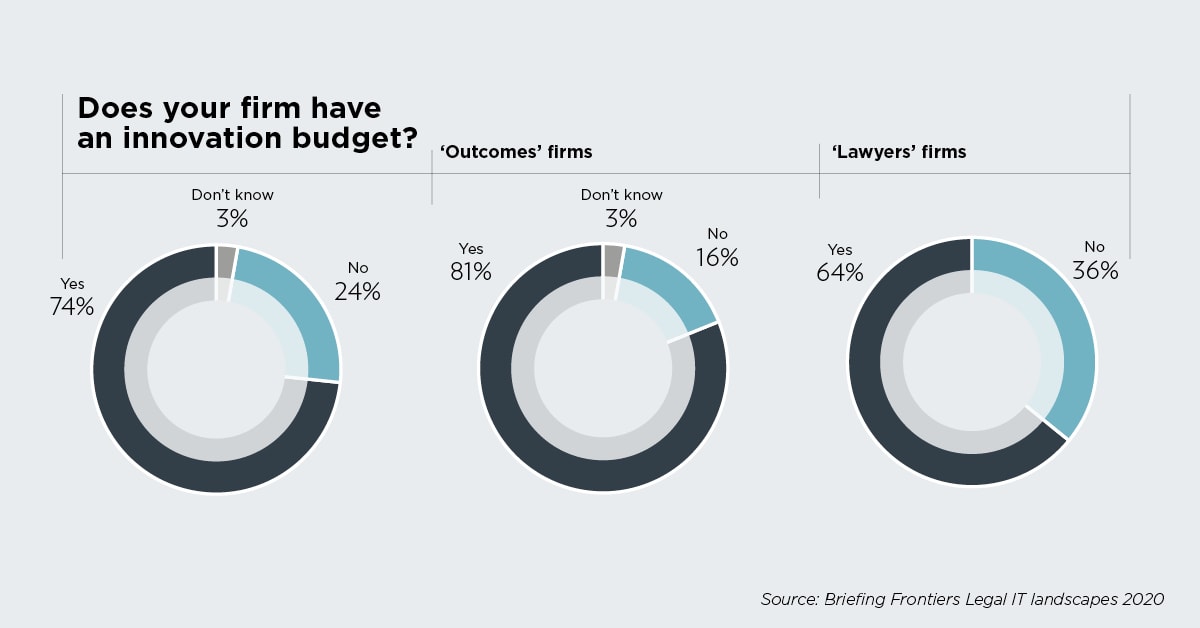The race for innovation
As we move into the next decade, it’s clear that innovation remains at the top of the legal agenda. While that’s encouraging, it’s also important to understand how game-changing it really is and what it means. Understanding this allows firms to gauge their position in this competitive arms race and focus on the right things.
The fact that the vast majority of respondents to the latest Legal IT landscapes survey can point to an ‘innovation leader’ within their firm, and almost a half have a fully separate innovation unit, are positive signs that firms are not merely paying lip service to the concept.
By assigning specific individuals and teams to drive and deliver innovation, there’s accountability to make bold decisions and implement sometimes challenging changes. The fact that such a low percentage of firms surveyed have no dedicated innovation investment budget is telling: most firms are committed, to a greater or lesser extent, to the pursuit of better, faster, more cost-effective services to add value to clients and sharpen their competitive edge.
Of course, innovation means different things to different people; it may represent a radical new way of doing things for an individual firm, even if it’s following a fairly well-trodden path in terms of wider market trends. That by no means negates the value of new initiatives or solutions.
For example, automation is still a major focus of innovation spend, with good reason. The Legal IT landscapes research highlights an extensive list of potential applications and significant scope to automate more processes: see the finding that just 28% of the precedent bank, on average, is automation-ready.
Investment budgets are not unlimited. Firms must be realistic about their ambitions and prioritise their needs, whether that’s AI for document review, cloud systems to centralise information, document automation products that can be adapted for client as well as firm use, or streamlined e-billing or business management solutions to maximise efficiency and transparency. Then they need to get everyone engaged from the outset if innovative change is to be constructive – not disruptive – internally, and equally important, if new systems and ways of working are to be sustainable.
This article can be found in Briefing report: Legal IT landscapes 2020.




